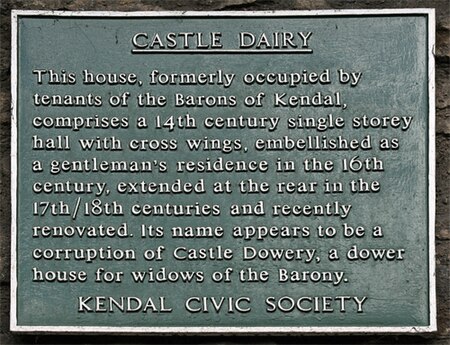The Castle Dairy
Buildings and structures completed in the 14th centuryBuildings and structures in CumbriaGrade I listed buildings in KendalTourist attractions in Cumbria

The Castle Dairy is a medieval building located in Kendal, Cumbria. The name implies a connection to Kendal Castle and it is possibly the town's oldest continuously inhabited structure.A Grade I listed building, it is now a restaurant. The building is located on the north side of Wildman Street, near to Stramongate Bridge, to which it may also have some connection.
Excerpt from the Wikipedia article The Castle Dairy (License: CC BY-SA 3.0, Authors, Images).The Castle Dairy
Wildman Street,
Geographical coordinates (GPS) Address Website External links Nearby Places Show on map
Geographical coordinates (GPS)
| Latitude | Longitude |
|---|---|
| N 54.3309 ° | E -2.7406 ° |
Address
Castle Dairy
Wildman Street 26
LA9 6EN , Mintsfeet
England, United Kingdom
Open on Google Maps










